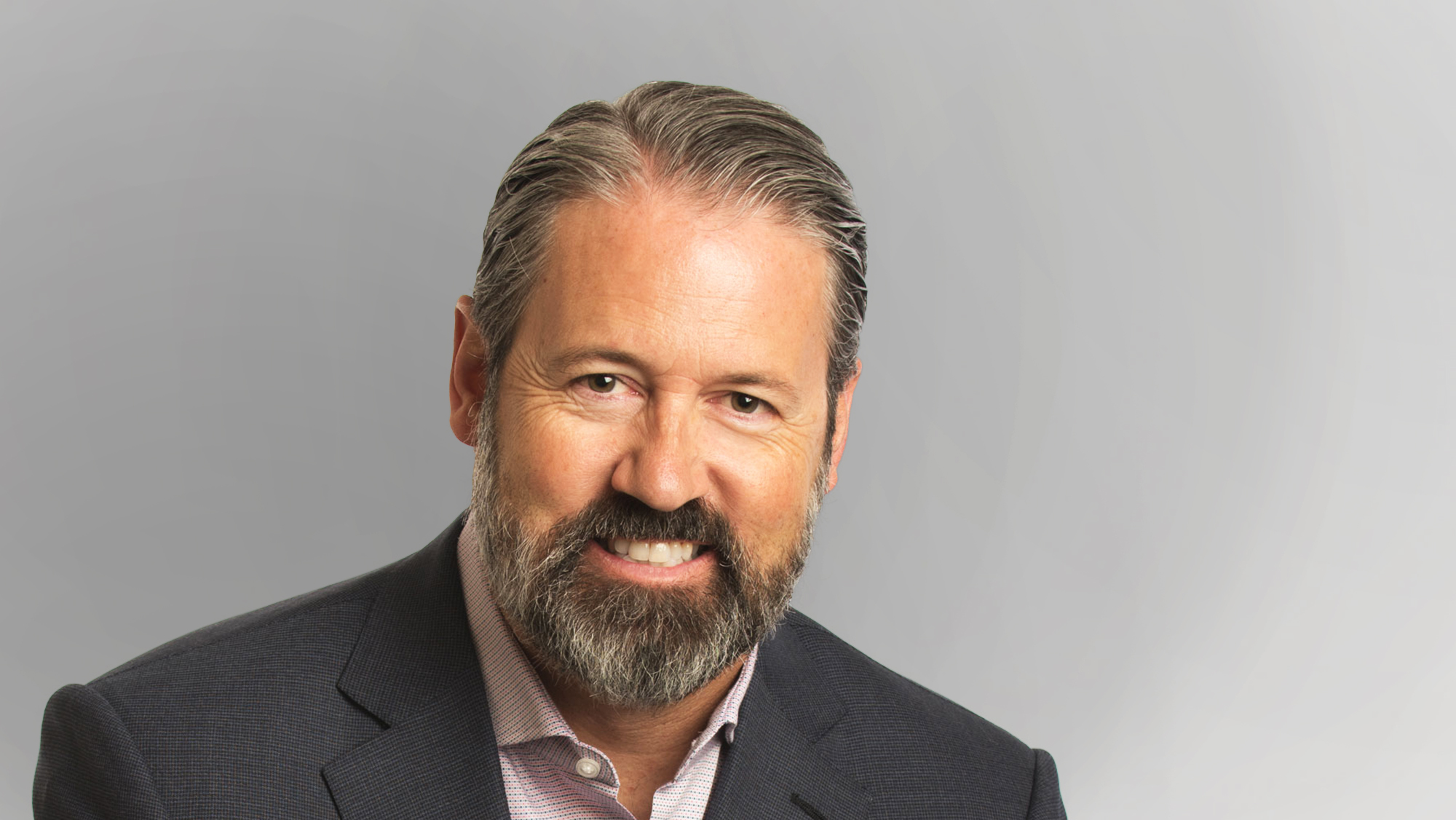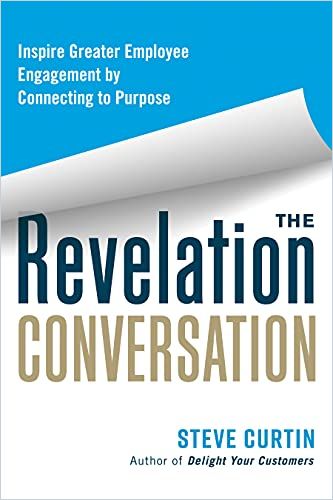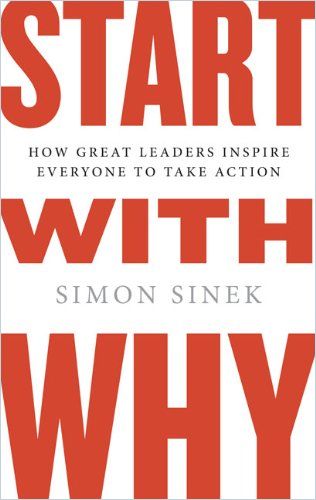“Greater Employee Engagement Ends up Benefiting Everyone.”

Steve, what inspired you to write your latest book, The Revelation Conversation?
Steve Curtin: In 2016, I had a seminal experience while working with a sophisticated, billion-dollar technology company. I was invited to speak to a group of senior managers at the company’s annual leadership summit on the topic of connecting to purpose at work. My client and I devised a quick activity to determine how many of the 222 leaders in attendance could recall the company’s single-sentence corporate mission statement. Prior to my presentation, we distributed index cards to each participant. We asked them to record the one-sentence mission statement on the card from memory, without the aid of a smartphone or the colleague seated next to them. Guess what we discovered? Only 4 of the 222 leaders in attendance (less than 2 percent) could accurately recall the company’s pithy guiding statement. Thirty-four participants (15 percent) left their cards blank or answered with a question mark. One senior manager thought it was a trick question and wrote, “As far as I know, we don’t have a corporate mission statement right now.”

What conclusion did you draw from this experience?
The experience reinforced an observation that spurred me to write this book: Although organizations consistently develop corporate mission, vision, purpose statements and a set of core values, leadership is only inconsistently able to recall them. As a result, leaders are unable to reveal these corporate ideals to employees, connect them to employees’ daily work activities and leverage them to inspire greater employee engagement.
When discussing purpose-driven organizations, many people immediately think of Simon Sinek’s influential book, Start with Why. Do you agree with Sinek’s approach related to the role of purpose in the workplace?
Simon Sinek’s work, and specifically his book, Start with Why, has been highly influential in my work. I credit Sinek for inspiring a thought process that begins with WHY versus the traditional WHAT, followed by HOW. Sinek brought the question of WHY? into the spotlight for millions of people, including me.

How do the overlapping WHAT, HOW, and WHY circles apply to individual job roles?
In my work, I’m focused on the WHY of the job role versus the WHY of the organization and its products and services. The WHAT circle represents what the employee should know (job knowledge). The HOW circle represents how the employee executes or applies his/her job knowledge (job skills). And the WHY circle represents why the employee does what he/she does, and how he/she does it at work (job purpose). The WHY circle represents the employee’s single highest priority at work in support of organizational purpose.
In your book, you introduce a very useful model of two parallel human journeys: horizontal and vertical. Could you briefly explain the distinction between the two?
The two journeys represent different aspects of our life journey. There is a horizontal journey of self-improvement and a vertical journey of self-discovery. These journeys are concurrent. When you are in nature contemplating your existential purpose in life, you are primarily on a vertical journey. Here, you may be alone, and your reflections and discoveries are deeply personal.
So the vertical journey applies to your private, or even spiritual, life. How about the concurrent horizontal journey?
When you are at work, you are primarily on a horizontal journey, studying this, learning that and developing professionally. Your coworkers are each pursuing their own horizontal journeys. What distinguishes these journeys is that only one journey is readily available or accessible to your employer. Although employees’ vertical journeys of self-discovery are private and inaccessible, their horizontal journeys of self-improvement are awaiting the input and guidance of their supervisors, managers, leaders and mentors.
When you are at work, you are primarily on a horizontal journey, studying this, learning that and developing professionally.
Steve Curtin
You make a distinction between job essence and job function. Could you give us an example? How do you incorporate job essence into a job function?
Every job role has two dimensions: Job Functions and Job Essence. Job Functions are the duties and tasks associated with a job role. For employees to properly execute their job functions, they must possess adequate job knowledge and demonstrate sufficient job skills. By knowing WHAT to do and HOW to do it, employees can now reliably execute job assignments and deliver the product or service for which their job role is responsible. But that’s only one dimension of an employee’s job role. The other dimension is Job Essence. Job Essence consists of the actions and behaviors that reflect the higher purpose of the job role.
Besides defining a guiding purpose, laying down a set of core values can also help inform people’s behaviors and actions at work. How can leaders help employees implement a company’s core values?
A company’s core values serve as a touchstone for employees’ behavior and decision-making.
When your values are clear to you, making decisions becomes easier.
Roy Disney, The Walt Disney Company
Once you have a set of solid core values, you should add context to them by expanding them into value statements. These are pithy descriptions of how your organization interprets the value. Each value statement is further described in terms of behaviors that demonstrate the value in action.
Can you give an example?
Let’s say one of your company values is to keep promises. In terms of employee behavior, you may explain that manifesting this value in your daily work means honoring your word, being dependable and making responsiveness a priority. In an organization that has codified behavioral expectations related to honoring commitments, it would be difficult for an employee to repeatedly miss deadlines, for example.
Every job role has two dimensions: Job Functions and Job Essence.
Steve Curtin
How do supervisors, managers and leaders build a bridge between a conceptual job purpose and the actual work assignments employees are paid to perform?
You do so by incorporating purposeful actions and behaviors into daily work activities. Let’s say, for example, a full-service restaurant has articulated a purpose to “surprise and delight” every guest. Servers could then incorporate the action of including a complimentary amuse-bouche into the process of table service. This gesture links the organizational purpose (to surprise and delight every guest) to the server’s job responsibilities (table service).
Although organizations consistently develop corporate mission, vision, purpose statements and a set of core values, leadership is inconsistently able to recall them.
Steve Curtin
There has been some pushback lately regarding the notion that we should look for purpose, joy and fulfillment in our jobs. I am thinking here particularly of Sarah Jaffe’s book, Work Won’t Love You Back. The elevation of purpose above everything else can lead to burnout and justify poor working conditions, Jaffe maintains. Where do you stand on this debate? What are your thoughts?
I haven’t read Jaffe’s book, but I believe that by articulating the higher purpose of the job role and linking it to daily work activities, you can inspire greater employee satisfaction. I don’t think you have to choose sides between the employer and the employee. I believe both can win (in addition to customers). Employees win by finding fulfillment and growth opportunities in their work, making money to pay for things, forming relationships with coworkers and accessing health insurance and other employee benefits. The company, meanwhile, wins by reaping the benefits of employee productivity in the form of profits, stock appreciation, enhanced goodwill, growth, etc. Employees also benefit from these outcomes by enjoying greater job security, opportunities for advancement and retirement savings. I think greater employee engagement ends up benefiting everyone.
About the Author
Steve Curtin is an author and a world-leading expert on the topic of customer service. Prior to launching his consultancy, he held various positions in operations, human resources, sales and marketing at Marriott International.






